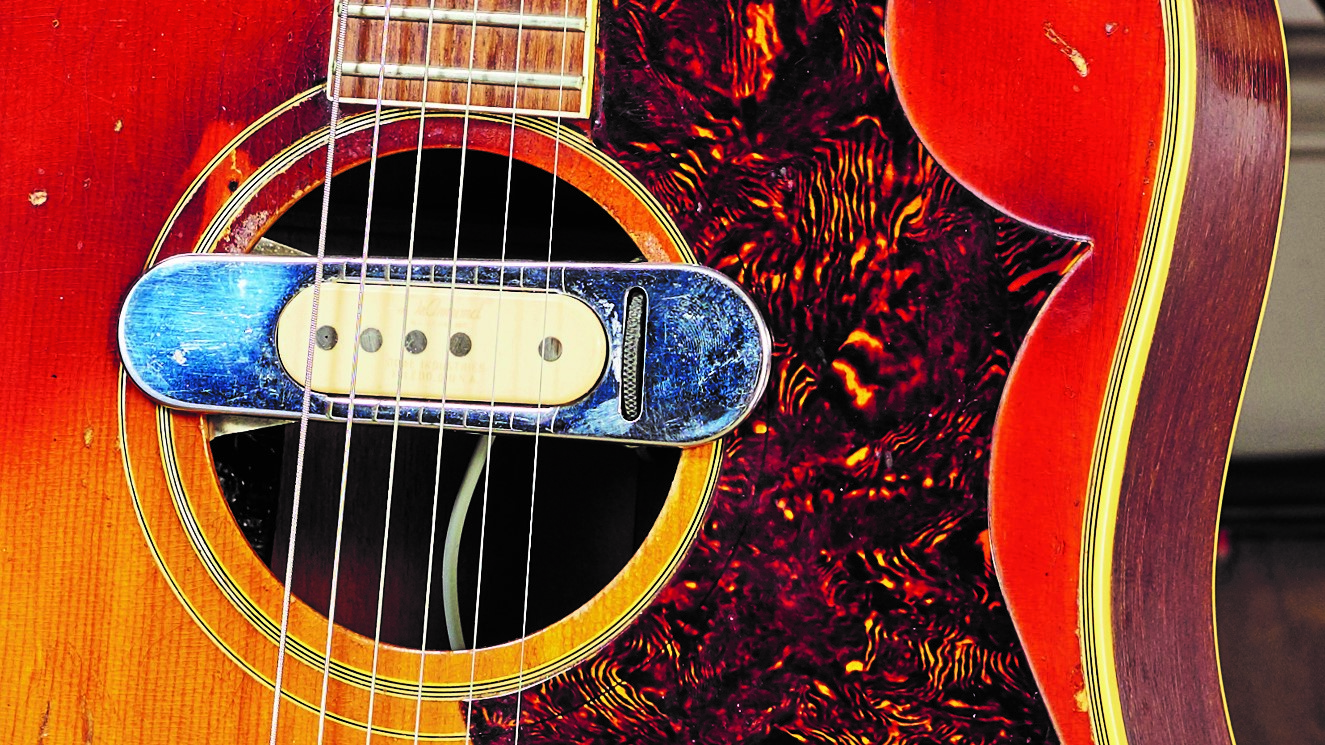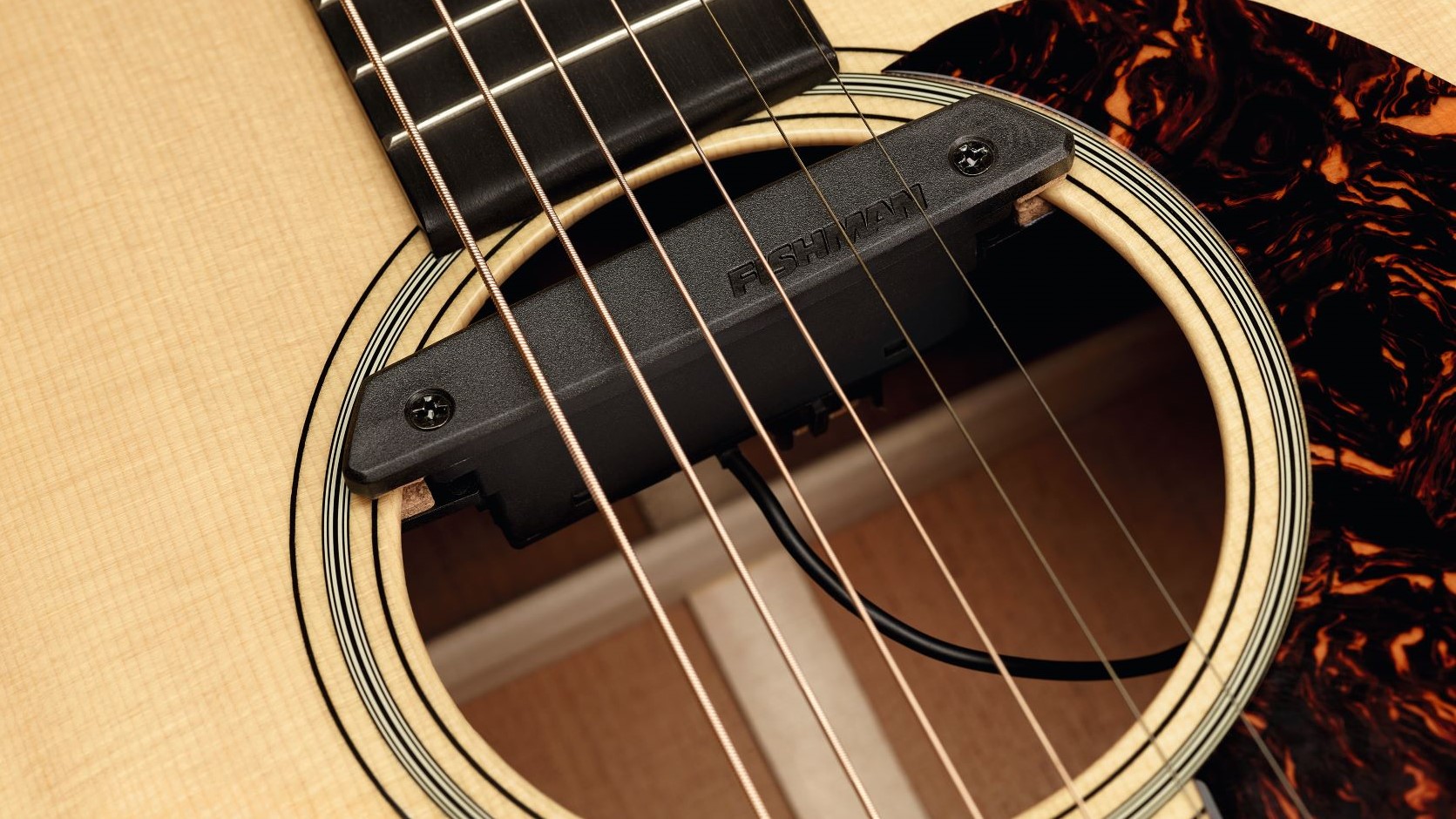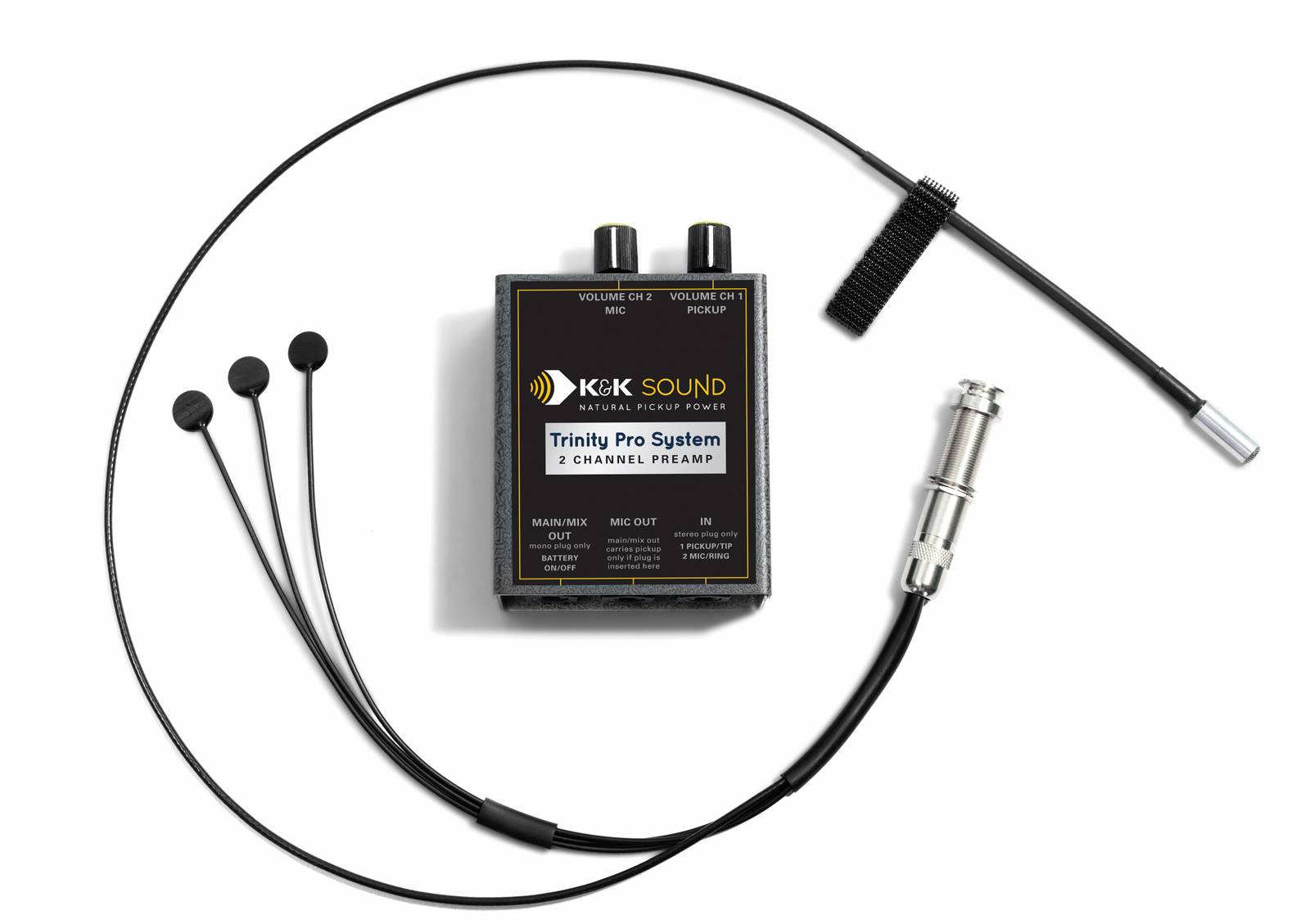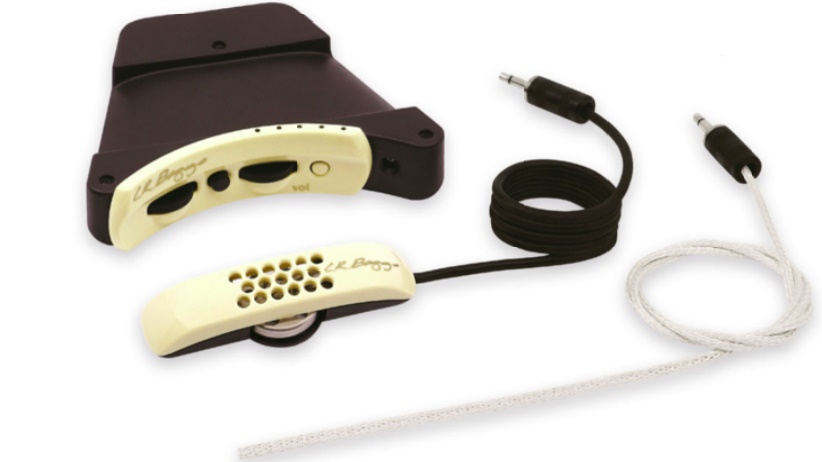How to Choose the Right Acoustic Guitar Pickup
From magnetic soundhole pickups and piezo transducers to onboard mics.

How to amplify an acoustic guitar remains a mystifying question for many players. Despite major advances from dedicated acoustic electronics manufacturers like Fishman and L.R. Baggs, some guitarists still prefer the tried-and-true route of using stage microphones. While mics do a good job of accurately reproducing an acoustic guitar’s sound, they can cause feedback when used in conjunction with stage monitors. Instead, consider these three alternatives.
Magnetic Soundhole Pickups
Placing a pickup in the soundhole is the second oldest way to amplify an acoustic guitar. In fact, a guitar in the Martin Museum reveals that Leo Fender’s earliest attempt at creating an electric guitar involved simply sticking a couple of pickups on a Martin dreadnought, together with a few control knobs wired to an output jack.
Like electric guitar pickups, acoustic pickups use magnets to sense string vibrations. Soundhole pickups were traditionally passive, but modern examples include battery-powered active pickups, such as the relatively flexible Seymour Duncan Active Mag that received an Editors’ Pick Award in our September 2019 issue.

Soundhole pickups offer several advantages over the alternatives. They fit inside the soundhole and clamp onto its edges, making them relatively unobtrusive, and they can be installed temporarily, allowing you to remove them when amplification isn’t needed. Best of all, you don’t need to cut into your guitar to use one. Magnetic pickups also sound good through electric guitar amps and effects, as well as through acoustic systems, so rig options abound.
In addition, the strings-forward sound of a magnetic pickup is suitable to traditional strummers and singer-songwriters. Some disadvantages of pickups include the weight they add and their lack of flexibility with respect to placement. Soundhole pickups are also not ideal for picking up percussive body tones, and many offer few or no onboard controls. Permanent installation may require cutting a hole for the endpin jack, and it leaves the pickup partially covering the soundhole, but at least the cord can be secured to the inside of the body, where it’s out of your way.
Piezo Transducers
All the latest guitar news, interviews, lessons, reviews, deals and more, direct to your inbox!
Piezo transducers began to gain popularity in the ’70s and have since become ubiquitous on acoustic-electric instruments. In its most basic form, an undersaddle pickup is a transducer strip that sits underneath the bridge saddle, where it responds to string pressure and converts that energy to an electrical signal that is sent to an onboard battery-powered preamp.
When auditioning an instrument with a piezo transducer, listen carefully to ensure that all the strings have the same relative volume when amplified. If not, the piezo strip might not be in contact with the bridge saddle completely.

Traditionally, piezo pickups have been criticized for their “quacky” or compressed tone, but they’ve come a long way, as both the pickups and their requisite onboard preamp systems continue to improve. Some systems, like Taylor’s Expression 2, use multiple transducers in a variety of locations within the body to more fully represent an acoustic guitar’s true wood tones. Gabriela Quintero of Rodrigo y Gabriela utilizes a gang of transducers situated all over her instrument to capture the intensely percussive elements of her playing style.
Onboard Microphones
For all the benefits of magnetic and piezo pickups, there’s still nothing quite like the sound of a microphone. Some of the best options today use a lavalier-style mic element as part of a system that also uses a magnetic or piezo pickup.
For obvious reasons, the mic is almost always inside the instrument. Internal mics can add an awesome “realness” to the sound, but be careful not to blend in too much of the mic signal, or feedback issues may result.

Tommy Emmanuel mitigates that problem by placing a rubber feedback buster in the soundhole, which allows him to maximize the mic signal in his blend. Some players also use much lower monitor levels for acoustic numbers onstage, while others such as Bruce Cockburn simply invest in an in-ear monitor system to ensure maximum acoustic goodness at all times.
Soundhole pickups, piezo transducers and microphones all have their place in the overall acoustic pickup equation. Don’t be afraid to experiment with them in combination. Some players incorporate all three to get the most powerful and truly acoustic-sounding signal possible.
Jimmy Leslie is the former editor of Gig magazine and has more than 20 years of experience writing stories and coordinating GP Presents events for Guitar Player including the past decade acting as Frets acoustic editor. He’s worked with myriad guitar greats spanning generations and styles including Carlos Santana, Jack White, Samantha Fish, Leo Kottke, Tommy Emmanuel, Kaki King and Julian Lage. Jimmy has a side hustle serving as soundtrack sensei at the cruising lifestyle publication Latitudes and Attitudes. See Leslie’s many Guitar Player- and Frets-related videos on his YouTube channel, dig his Allman Brothers tribute at allmondbrothers.com, and check out his acoustic/electric modern classic rock artistry at at spirithustler.com. Visit the hub of his many adventures at jimmyleslie.com
